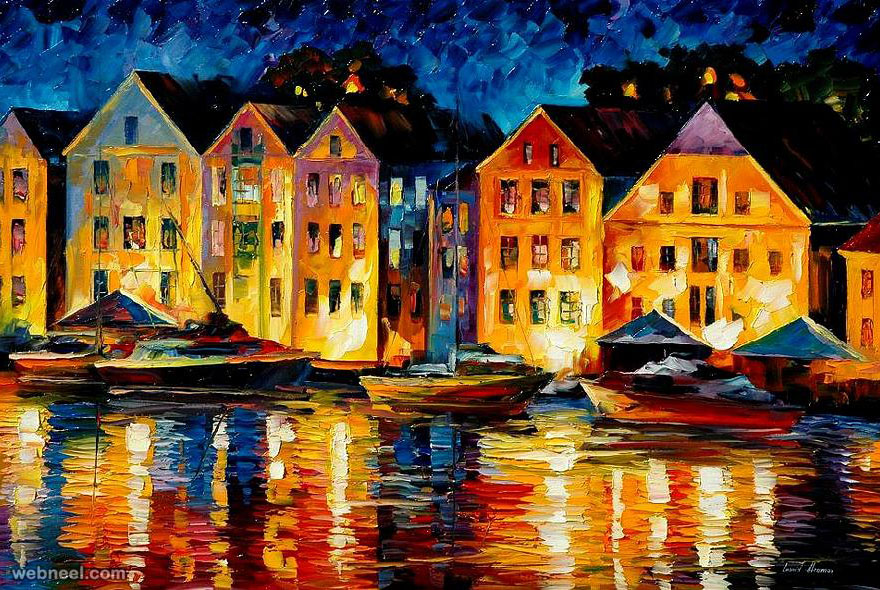The Benefits of Purchasing Oil Paints: Why They Are a Timeless Financial investment
The advantages of purchasing oil paints prolong past plain appearances. These art work carry historic significance and social value, making them beneficial enhancements to any type of collection. Their distinct structures and strategies add to an appealing aesthetic experience. Well-known artists usually see their work value over time, offering a potential monetary benefit. As one explores the diverse factors for buying oil paintings, the deeper effects of such a selection become significantly evident
The Visual Allure of Oil Paints
The allure of oil paintings hinges on their abundant appearances and vibrant colors, which can transform any kind of room right into a remarkable environment. These art work possess a depth that mesmerizes visitors, attracting them right into the complexities of the brushstrokes and the interaction of light and shadow. The glossy coating of oil paint boosts the visual experience, enlivening scenes and subjects in a manner that other mediums usually can not attain. Additionally, the range of styles-- from classical to contemporary-- permits for a varied option that can enhance any type of decoration. The emotional resonance communicated with shade options and methods adds a layer of connection between the viewer and the artwork, making oil paintings not just ornamental items, but effective expressions of imaginative vision.
Historic Relevance and Cultural Value
Oil paints function as important links to an imaginative heritage, showcasing methods and designs that have evolved over centuries. They envelop social expressions and identities, showing the values and stories of their time. By obtaining these jobs, individuals add to the preservation of background and the gratitude of varied cultural traditions.
Artistic Heritage Preservation
While several may ignore the relevance of artistic heritage, acquiring oil paints plays an important duty in protecting social and historical stories. These artworks act as visual documents of their time, capturing the significance of societal worths, traditions, and historic events. By getting oil paints, collection agencies add to the securing of cultural traditions, guaranteeing that future generations can value and discover from these imaginative expressions. Each piece shows the distinct story of its creator and the context in which it was made. Furthermore, the ongoing admiration and screen of oil paints in various settings help to foster an understanding of diverse imaginative movements, enhancing the social landscape. Spending in oil paintings is not simply a monetary choice but an act of cultural stewardship.
Social Expression and Identity
Art serves as a powerful medium for cultural expression and identification, reflecting the diverse narratives that form societies. Oil paintings, in particular, catch the significance of social heritage, showing historic contexts and sociopolitical environments. Each brushstroke communicates feelings and tales distinct to particular practices, enabling customers to involve with the artist's social history. This link fosters a feeling of recognizing and belonging amongst various areas. Furthermore, oil paintings commonly act as aesthetic paperwork of cultural development, showcasing shifts in identity in time. The investment in these art work not just sustains musicians yet also maintains cultural heritages, making them considerable assets for collectors. Ultimately, oil paints improve one's appreciation for the details of human experience and the rich tapestry of social identity.
Appreciation in Worth Gradually

The appreciation of oil paints with time is affected by various elements, consisting of historical worth fads that mirror changing preferences and cultural significance. Additionally, the track record of the musician plays a vital function in identifying the artwork's market value, often raising as the musician gains recognition. Market demand changes can even more affect costs, making oil paints a potentially profitable investment for collection agencies.
Historic Worth Fads
As collection agencies look for to buy concrete possessions, the historical value trends of oil paints disclose an engaging story of gratitude with time. Historically, oil paints have actually demonstrated a constant higher trajectory in value, specifically for works by well established artists. Economic cycles and market demand have actually affected these trends, with periods of raised passion usually bring about substantial price rises. Public auction records regularly highlight the exceptional returns accomplished by legendary pieces, even more enhancing the idea of oil paintings as practical long-term investments. Furthermore, cultural movements and changes in collection agency choices have actually sometimes spurred unanticipated admiration, revealing that the art market, while somewhat unpredictable, usually prefers top quality oil paints. Consequently, recognizing these historical patterns can guide financiers in making informed decisions.
Artist Credibility Influence
While the track record of a musician plays a crucial duty in the appreciation of oil paintings, it is very important to identify that this impact can differ considerably based upon numerous variables. Developed artists, especially those with a significant historical or social influence, have a tendency to see their works value much more swiftly. Conversely, lesser-known or emerging artists might not experience the same level of demand, affecting their artwork's worth. Additionally, the musician's capacity to develop a regular body of job and preserve relevance in the art globe can affect long-term gratitude. Collectors commonly seek works from artists who are recognized by reputable galleries and institutions, which can even more enhance the value of an oil paint in time, making musician online reputation a vital factor to consider in investment choices.

Market Need Changes
How do market demand fluctuations affect the appreciation of oil paintings gradually? The value of oil paints is inherently connected to market need, which can differ based upon financial conditions, fads, and collection agencies' preferences. In times of economic success, need often rises, bring about increased prices as even more buyers enter the marketplace. Conversely, during economic slumps, need might decrease, causing worths to stagnate or also decrease. Additionally, the appeal of particular musicians can change, influencing their work's charm. Eventually, recognizing market need is essential for financiers, as well-managed collections can value considerably with time, mirroring both the ability of the musician and the wider market dynamics. This interplay underscores the relevance of critical buying in oil painting financial investments.
One-of-a-kind Appearances and Methods
Oil paints mesmerize visitors with their distinct appearances and techniques, showcasing the musician's mastery over the medium. The thick application of paint, called impasto, produces a three-dimensional effect, welcoming touch and boosting aesthetic deepness. Artists typically utilize various brush strokes, layering, and polishing approaches to achieve elaborate information and luminous shades. This versatility enables rich contrasts and refined shifts, making each art work distinctly meaningful. Moreover, the sluggish drying time of oil paint enables artists to mix colors flawlessly, causing smooth gradients and vibrant colors. These methods add to the paint's overall character, making it a compelling focal factor. Each oil paint works as an indication of the creativity and skill inherent in traditional creative practices.
Versatility in Home Style
The special textures and strategies of oil paintings not just showcase imaginative skill however likewise boost their versatility in home design. These artworks can perfectly enhance numerous interior designs, from modern-day minimalist to traditional elegance. Oil paints work as focal points, drawing interest and sparking conversation among guests. Their rich colors and depth can harmonize with different color palettes, making them adaptable to altering style fads. Furthermore, the psychological resonance of oil paintings can create ambiance, whether it be warmth in a comfortable living-room or vibrancy in a creative work area. By integrating oil paints, property owners raise their rooms, changing them right into attentively curated settings that show individual preference and creative appreciation. Ultimately, oil paintings are a long-lasting choice for improving home visual appeals.
Connection to Popular Artists
While lots of art types can stimulate appreciation, acquiring oil paintings commonly develops an one-of-a-kind link to prominent artists throughout history. Owning an oil painting allows collectors to involve with the creative visions of masters like Van Gogh, Monet, and Rembrandt. Each brushstroke personifies the musician's strategies, emotions, and intentions, offering insight right into their globe. This link goes beyond time, as each piece lugs a narrative that reflects the cultural and historic context of its creation. Enthusiasts not only get an artwork however also a fragment of the musician's tradition. As art fanatics discover the stories behind these paintings, they get a deeper appreciation for the craftsmanship and imaginative movements that formed their advancement, improving the value of their financial investment.
Psychological and Emotional Benefits of Art
Art often works as an effective driver for mental and emotional well-being. The presence of oil paintings in a living space can stimulate a variety of emotions, from peace to inspiration. Their lively shades and complex details use audiences a retreat, enabling representation and contemplation. Studies suggest that involving with art can reduce stress and stress and anxiety, promoting a sense of tranquility. In addition, possessing initial art work can create an individual link, enhancing feelings of pride and delight. This emotional bond usually causes a much deeper admiration of one's environments, changing a residence right into a home. Ultimately, the psychological benefits of art extend beyond aesthetics, adding to total psychological health and wellness and enhancing life experiences.

Regularly Asked Inquiries
Just how Do I Select the Right Oil Paint for My Area?
Picking the ideal oil painting entails considering the area's shade plan, size, and total visual. One ought to evaluate individual taste, the painting's emotional effect, and how well it complements existing decor before making a get more info decision.

What Aspects Influence the Worth of an Oil Paint?
The worth of an oil painting is influenced by aspects such as the musician's online reputation, provenance, historic significance, market, rarity, and condition demand. Each element contributes to general worth and charm amongst collectors.
Just How Can I Take Care Of and Maintain My Oil Painting?
To care for and maintain an oil paint, one must on a regular basis dust it with a soft towel, prevent straight sunlight direct exposure, control humidity degrees, and think about specialist cleaning to protect its vibrancy and stability.
Exist Particular Musicians Understood for Their Oil Paints?
Numerous musicians are renowned for their oil paintings - oil paintings for sale. Significant figures include Vincent van Gogh, Claude Monet, and Rembrandt, each commemorated for their special techniques and payments to the art world through vibrant, textured oil mediums
Where Can I Purchase Authentic Oil Paints?
Genuine oil paintings can be bought from reliable galleries, art fairs, and online systems focusing on art. Enthusiasts should verify the credibility and provenance prior to buying to guarantee a valuable investment. Historically, oil paintings have shown a regular upward trajectory in value, particularly for works by established musicians. While the reputation of an artist plays an important duty in the recognition of oil paints, it is crucial to recognize that this influence can vary considerably based on numerous aspects. Oil paintings captivate customers with their distinctive appearances and techniques, showcasing the musician's proficiency over the medium. While many art types can stimulate adoration, acquiring oil paintings usually establishes a distinct connection to popular artists throughout history. The value of an oil painting is affected by variables such as the artist's track record, provenance, historic significance, rarity, market, and problem demand.